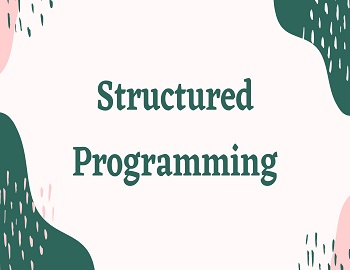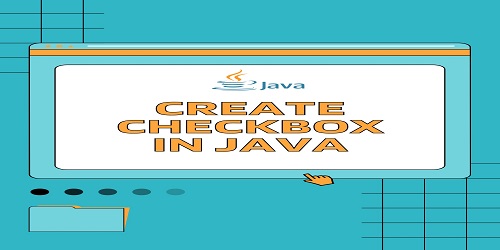Table of Contents
Internet:
Nowadays, the Internet has become an integral part of our lives. It is one of the fastest-growing phenomena these days. The importance of the Internet has grown rapidly in all fields of human life including not only research and education but also marketing and trade as well as entertainment and hobbies. It has revolutionized the world of communication making it possible to communicate between computers located in different places within seconds. It has totally changed the way businesses are carried out and information has been accessed around the world.
What is Internet?
Internet (Inter-Network) or simply ‘Net’ can be defined as a worldwide system of computers connected through a network for sharing information. It is also called a network of networks because it is made up of thousands of smaller networks that can exchange information with each other.
The Internet also refers to the global information system that-
- Is logically linked together by a globally unique address space based on the Internet protocol (IP) or its subsequent extensions/follow-ons;
- Is able to support communications using the Transmission Control Protocol/Internet Protocol (TCP/IP) suite or its subsequent extensions/follow-ons, and/or other IP-compatible protocols; and
- Provides, uses, or makes accessible, either publicly or privately, high-level services layered on the communications and related infrastructure.
A Protocol is a set of rules, which computers use to communicate with each other across a network.
History of the Internet:
The seeds of the Internet were planted in 1969 when the U.S. Department of Defense sponsored a project named ARPANET (Advanced Research Projects NETwork). The goal of this project was to connect computers at different universities and U.S. defense. Soon the scientists, engineers, researchers, and students who were part of this system, began exchanging data and messages on it. The users of this system were also able to play long-distance games and socialize with people who shared their interests. Seeing the success of ARPANET, the National Science Foundation, another U.S. Federal Agency, created a new high-capacity network called NSFnet, which was more capable than ARPANET. However, one drawback of NSFnet was that it allowed only academic research on its network, which means that private and public businesses could not use it. Therefore, private organizations and people started working to build their own networks, which were later interconnected with ARPANET and NSFnet to form the internet. After the evolution of the Internet, ARPANET was shut down in 1990, and NSFnet was discontinued in 1995. However, the commercial internet service associated with ARPANET and NSFnet continued to run on the internet. Present day Internet is now a platform for all types of resources. It continues to grow as an informational and communication resource with each passing day. It provides personal, economic, educational, and political resources to each connected user across the globe. It has truly become a communication highway for millions of users.
Who Governs the internet?
The authority to govern the Internet is not attributed to any single organization. Many organizations such as governments, corporations, universities, commercial companies, etc., jointly run the Internet. These organizations jointly contribute to the research, development, and management of the Internet. Following is a list of the three main organizations and the role they play in the management of the Internet-
- IAB (Internet Architecture Board) is responsible for approving standards and allocating resources.
- IETF (Internet Engineering Task Force) is a large open community of network designers, operators, vendors, and researchers that focuses on solving technical problems on the Internet. It also provides development services for the Internet by creating, testing, and implementing Internet standards.
- InterNIC (Internet Network Information Center) is responsible for providing registration services to Internet Community.
How Does Internet Work?
The computers on the Internet are connected to each other with the help of various small networks. These networks are in turn connected through the gateways to the Internet backbone. A gateway is a device that connects two or more networks that are dissimilar in terms of the architecture and the protocols they use. A backbone is a central interconnecting structure that connects one or more networks just like the trunk of a tree or the spine of a human being.
The steps for Internet Working are given below:
- At the source computer, the message or the file/document to be sent to another computer is firstly divided into very small parts called Packets. A packet generally contains up to 1500 characters.
- Each packet is assigned a unique serial number such as 1, 2, 3, and so on.
- All the packets are sent to the destination computer.
- The destination computer randomly receives the packets. It may even receive packet 5 before packet 1 arrives. If a packet is garbled or lost, it is demanded again.
- The packets are reassembled in the order of their serial number and the original message/file/document is obtained.
All computers on the Internet communicate with one another using the Transmission Control Protocol/Internet Protocol suite i.e. TCP/IP, which is the basic communication protocol of the Internet.
The TCP part is responsible for dividing the message/file/document into packets on the source computer. It is also responsible for reassembling the received packets at the destination computer.
The IP part is responsible for handling the address of the destination computer so that each packet is routed (sent) to its proper destination.
Uses of Internet:
Different groups of people use the Internet in different ways depending upon their requirements. Some of the common uses of the Internet are given below-
- The Internet is one of the biggest pools of information that has ever existed. It provides the latest information on any desired topic such as science, politics, travel, sports, cooking recipes, and so on. The Internet also provides you with the latest news about various issues, events, and happenings; new developments, and inventions; disasters, etc. It is a reliable, immediate, convenient, and fast source of information.
- Businesses use the Internet to provide access to complex databases, such as financial databases.
- Individuals, companies, and business organizations use the Internet for carrying out business online. The activity of carrying out business over the Internet is known as E-commerce (Electronic Commerce). It includes advertising, selling, buying, distributing products, and even providing after-sale services to users. E-commerce reduces the cost and time people that they incur while going out shopping.
- M-commerce (Mobile Commerce) implies the ability to interact and transact through mobile devices with a person at any place and time. It eliminates the barriers of time and location. It is similar to E-commerce which is carried out through mobile devices rather than fixed telephone networks. The Internet is accessed by a wireless protocol meant for mobile phones such as the wireless application protocol (WAP). The other features that are provided are web surfing, checking e-mail, chatting with audio and video, and creating and transferring multimedia content all through mobile phones.
- E-learning (Electronic Learning) is the mode of acquiring knowledge using the Internet and computer-based training programs. In this type of education, students learn and study on their own and communicate with their instructors and other students through e-mail messages, electronic forums, video conferencing, chat rooms, bulletin boards, and messaging.
- The use of Email (Electronic Mail) over the Internet has greatly speeded up communication between companies among co-workers and between other individuals.
- The Internet is widely used for entertainment also by providing a wide range of options like online audio and video libraries, online games, etc. Nowadays, companies working in the media and entertainment field are widely using the Internet to broadcast recorded and live T.V. and radio programs.
- Scientists and scholars use the Internet to communicate with colleagues, perform research, distribute lecture notes and course materials to students, and publish papers and articles.
- Social networking is an essential part of the Internet service that allows people to build social relations on the net. The websites that provide such services are known as social networking websites. Facebook is one of the most commonly visited social networking websites. The people connected on social networking websites share common interests or have real-life connections to form an online community of internet users. Institutions, companies, or organizations may form Facebook pages and accounts to promote their products on social platforms.
- There are wide ranges of software available on the Internet. Some of them are free and for some, you have to pay. The main advantage of using online software is that they are available all the time on the Internet. In addition, you can use and test the software for one or two months in demo mode before actually buying them.
- Cloud computing is the latest technology that has revolutionized how data and applications are stored, used, and shared using the Internet. This technology relies on sharing the resources (such as data and application programs) rather than storing them on local servers or personal devices. In Cloud computing, the word ‘cloud’ signifies the Internet. Hence Cloud computing means Internet-based computing. Various services, called cloud services are delivered to users through the Internet at any time and any place. The Cloud services include the use of software and storage space over the net. Since the data storage and processing is centralized, there is no need of installing different applications on our machine. This makes cloud computing extremely cost-effective. The only thing required for cloud computing is a web browser and an internet connection.
- Cashless Transactions, Online Banking and Trading, Job Search, Advertising, and Real-time updates are all Internet applications.









Comments (No)